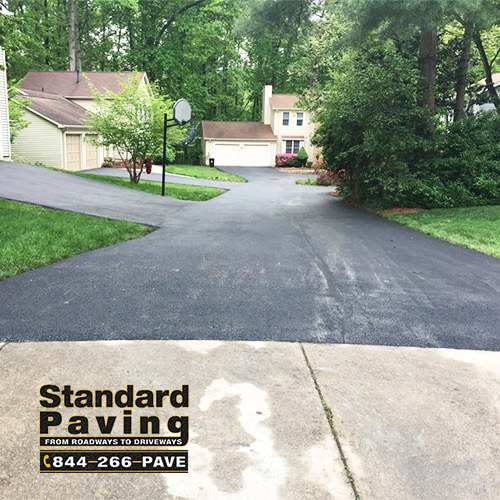When professionally installed, a northern Virginia homeowner can expect an asphalt driveway to give 20 to 30 years of smooth, reliable service with minimum maintenance requirements. Asphalt is an attractive, durable, cost effective paving material, but asphalt itself does not determine how long your drive will last. The key to a long-lasting asphalt drive is its subgrade. Done right, it will give you decades of trouble-free service. Done wrong and you could be looking at cracks, crumbling edges, and potholes in a year or two.
The subgrade of your drive will determine how your asphalt will drain, how it will react to the natural earth movement of the seasons, how long it will retain its strength, and how susceptible it will be to cracking and potholes. In short, the quality of the subgrade preparation will play a major role in the service life and overall performance of your asphalt driveway.
Some asphalt paving contractors won’t talk to you about the subgrade. They want to impress you with their self-leveling pavers, compactors, rollers and other equipment used in the actual paving. But in truth, proper subgrade preparation is the most time consuming and expensive part of the job. It’s also a process where cost cutting shortcuts will not be noticed for a year or more.
How You Want Your Subgrade Constructed
 You only get one shot to get the subgrade right. So, for starters you want an experienced, local, asphalt contractor like Standard Paving who is familiar with the challenges that the different soil types in northern Virginia present. Once you’ve made a selection (and we hope it’s us), the process goes like this:
You only get one shot to get the subgrade right. So, for starters you want an experienced, local, asphalt contractor like Standard Paving who is familiar with the challenges that the different soil types in northern Virginia present. Once you’ve made a selection (and we hope it’s us), the process goes like this:
- Removal of old drive. This is the only step that is different from installing a “new construction” driveway. Otherwise, the process is identical. When removing an old drive we use a front end loader to break up the asphalt assisted by a hand crew with picks to get in the tight spots. The old asphalt and the old subgrade are scooped up and disposed of along with any loose rock or trouble spots like clay or sand that may have been beneath the subgrade. As a rule of thumb, we remove anything that moves when you step on it.
- Drainage plan. Once the old drive and subgrade is removed, we develop a drainage plan that will determine how we grade the earth. The objective of the drainage plan is to ensure water drains away from the garage and off the driveway itself. This can get tricky with long drives or driveways that have curves. When the fine grading is completed, it’s time to bring in the new subgrade material.
- Subgrade aggregate. Gravel is the most common subgrade aggregate used in northern Virginia although recycled concrete is also appropriate in some situations. The gravel is spread and raked to ensure the grade is maintained. The more effort that goes into preparation, the longer lasting the drive will be. Once in place, the gravel is then compacted with a commercial roller creating a solid, stable, base ready for the asphalt layer.
Your driveway’s subgrade is similar to the foundation of your home. A strong foundation supports all the structural requirements needed to keep your home in perfect condition. If a foundation settles excessively, or fails creating severe cracks, it can have a devastating affect on your home no matter how well it is constructed. The same holds true for the subgrade of your asphalt driveway.
